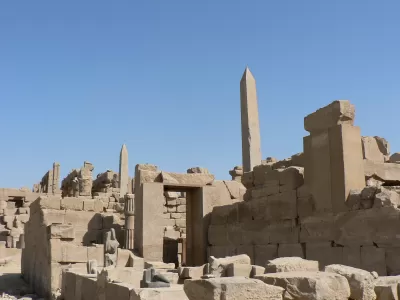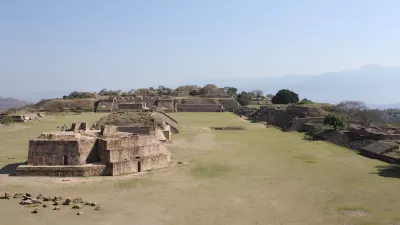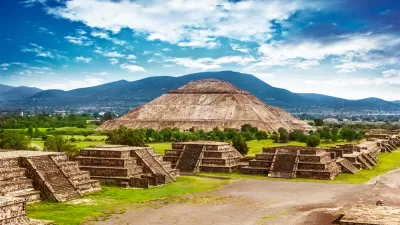The newly unearthed "golden city" sheds light on everyday life at the height of ancient Egypt's power.

A newly rediscovered "lost city" in Luxor is Egypt's most significant finding since Howard Carter unearthed King Tutankhamen's tomb in 1922, reports Sudarsan Raghavan for the Washington Post. The city is "believed to have been founded by King Amenhotep III, the ninth king of ancient Egypt’s 18th dynasty who ruled the country from 1391 to 1353 B.C.," and is possibly the largest administrative and industrial settlement of the time, an era when ancient Egypt was at the height of its wealth and power.
"The original goal of the mission was to find King Tutankhamen’s mortuary temple." Instead, the archaeologists found an entirely new city filled with buildings and artifacts that will help Egyptologists learn more about daily life in ancient Egypt. "The archaeological team dated the settlement through hieroglyphic inscriptions found on wine vessels, as well as rings, scarabs, pottery and mud bricks bearing the seals of King Amenhotep III’s cartouche."
The team has identified several specialized buildings and areas including a bakery and food storeroom, a craft workshop, and a fortified residential district. A cemetery is located north of the city, although the bodies of two cows and one human have been found within city buildings, leading to questions about social practices.
Luxor, known in ancient times as Thebes and the capital of then-Upper Egypt, is still a bustling city of over a million people today.
FULL STORY: A 3,000-year-old ‘lost golden city’ has been unearthed in Egypt

Alabama: Trump Terminates Settlements for Black Communities Harmed By Raw Sewage
Trump deemed the landmark civil rights agreement “illegal DEI and environmental justice policy.”

Planetizen Federal Action Tracker
A weekly monitor of how Trump’s orders and actions are impacting planners and planning in America.

The 120 Year Old Tiny Home Villages That Sheltered San Francisco’s Earthquake Refugees
More than a century ago, San Francisco mobilized to house thousands of residents displaced by the 1906 earthquake. Could their strategy offer a model for the present?

In Both Crashes and Crime, Public Transportation is Far Safer than Driving
Contrary to popular assumptions, public transportation has far lower crash and crime rates than automobile travel. For safer communities, improve and encourage transit travel.

Report: Zoning Reforms Should Complement Nashville’s Ambitious Transit Plan
Without reform, restrictive zoning codes will limit the impact of the city’s planned transit expansion and could exclude some of the residents who depend on transit the most.

Judge Orders Release of Frozen IRA, IIJA Funding
The decision is a victory for environmental groups who charged that freezing funds for critical infrastructure and disaster response programs caused “real and irreparable harm” to communities.
Urban Design for Planners 1: Software Tools
This six-course series explores essential urban design concepts using open source software and equips planners with the tools they need to participate fully in the urban design process.
Planning for Universal Design
Learn the tools for implementing Universal Design in planning regulations.
Clanton & Associates, Inc.
Jessamine County Fiscal Court
Institute for Housing and Urban Development Studies (IHS)
City of Grandview
Harvard GSD Executive Education
Toledo-Lucas County Plan Commissions
Salt Lake City
NYU Wagner Graduate School of Public Service





























